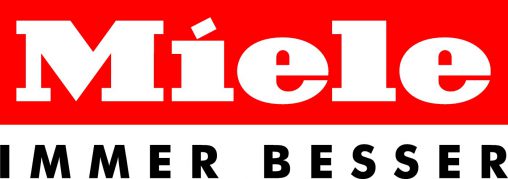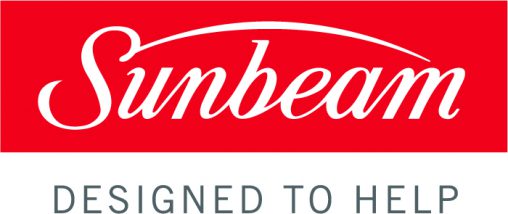Opinion

We received an enormous response to Dan Ratner’s recent guest contribution analysing five major electrical and appliance retailer brands. This time, we asked Ratner to cast his careful eye over several major suppliers’ brands and, once again, his report is a must-read for the industry.
Home appliances are an occasional purchase for most consumers. For example, you would probably only buy an oven when you’re putting in a new kitchen, renovating or replacing. This means that keeping these brands top of mind in between purchases can be a challenge. These brands need to think carefully about the context of the purchase and the type of customer they want to attract.
The most significant difference between customers ultimately comes down to how much they are willing to spend. There are those who want luxury kitchens as opposed to those who want functional appliances at the lowest price. This is how home appliance brands can differentiate themselves. The way a brand markets its appliances will affect the type of customers that are attracted to them.
Westinghouse
Westinghouse is a household name; often people know it because their grandparents had a Westinghouse refrigerator. It’s a historical brand that is associated with everyday appliances that are budget-friendly and functional. This brand appears to target the value-conscious customer.
To communicate this, Westinghouse’s website illustrates everyday situations, such as families gathered in the kitchen. The supporting copy includes lines like “everyday sticky fingers” and “made for modern families”. This gives the impression that Westinghouse products are stable, useful and functional. It reinforces an image of a safe brand for families who want appliances that work reliably at an affordable price.
The Westinghouse is a classic iconic logo with retro connotations that support its heritage. Its use of grey and blue works well and is easy on the eye. It’s not intrusive, suggesting its products fit seamlessly into family situations. Overall Westinghouse comes across as though it isn’t about being the focal point of the kitchen, it’s about making the whole kitchen feel like home.
Fisher & Paykel
Fisher & Paykel is a newer brand in the market. While it is also well-known and has history compared to the others, its name is not as established. However, like Westinghouse, they are looking to be an accessible brand.
The key difference between Westinghouse and Fisher & Paykel is that Fisher & Paykel seems to aim at attracting somewhat more aspirational buyers, by using imagery and content and stories that make it feel like a luxurious brand. This is demonstrated by the brand’s visual appearance; its use of black, grey and blue to create a consistent look with moody imagery to communicate its design ethos. Ultimately, it appears somewhat bolder and European-looking than Westinghouse.
This can be reflected in Fisher & Paykel’s target customer, a person who takes pride in their kitchen appliance without the European price tag. I imagine they like to watch programs like MasterChef and follow Jamie Oliver recipes and aspire to the European brands without the budget that comes with it.
Miele
Miele is a luxurious brand renowned for selling high-end, premium appliances. Established in the 1920s, Miele leverages its German heritage.
From a visual perspective, its red colouring gives the impression that it’s a strong, trusted brand, while also reflecting its German culture. Miele’s website illustrates its passion for cooking, from the stainless steel banner at the top to the cooking demonstrations and the overview of how the company began. The website states, “Miele is the only truly global premium brand of domestic appliances” and its appearance certainly reflects this statement.
Customers who buy Miele are trying to make a bold statement in their kitchen and this is reflective through their design ethos and visual identity.
Smeg
Smeg is very similar to Miele, focusing on European history and style. It is luxurious and uses this to reinforce the impression of high quality.
Smeg states on its website that it’s a global brand but also leverages its Italian history, citing 65 years of passion. Smeg differentiates itself from brands like Miele by focusing on being very high-tech and design led, using internationally renowned designers throughout.
This is reflected in the brand’s visual appearance. Its font is understated using lowercase typeface in sans serif, which looks smooth, strong and stylish, and is supported by the tagline ‘technology with style’.
Smeg’s looking to sell a design style that is high-tech and minimalistic. Interestingly it says “with Smeg, appliances take centre stage, in the heart of the home”.
This is a fundamental reflection of the customer it wishes to attract: people who own a Smeg want their appliance to be a key focal point of their home. Smeg, therefore, focuses on design and beauty, and this is reinforced by using the brand equity of well-known designers, such as Guido Canali, Mario Bellini and Marc Newson.
This is summarised and communicated through their tagline combining technology with style. Smeg is a serious brand for serious buyers that are not particularly limited by budget.
Dyson
Dyson is all about disruption. Everything it does is the antithesis of the status quo. This sense of contrast and a unique approach to functional industrial design is what gets it cut through and makes it attractive to new customers. This is reinforced by the clean black and white logo, combined with colourful palate to portray an innovative image.
By doing this, Dyson has tried to rethink the entire market and create a new space within a very crowded category.
Interestingly, they have focused on vacuum cleaners and this tends to limit the brand from extending its products toward things like ovens or toasters. However, this is not really a weakness as this focus and uniqueness is also what makes the brand stand out.
It’s funky and cutting-edge and it’s making vacuum cleaners a cool gadget to buy.
Breville
Breville is a strong brand that’s fun and homely. It’s well known across Australia and has an extremely recognisable logo.
Visually, Breville is very family-oriented, targeting a mainstream audience. Breville focuses on use rather than product by showing the output of the appliance rather than the actual appliance (for example, delicious looking pizzas and biscuits on its website). This inherently connects the product to an emotional desire that helps sell through the function.
Breville has chosen to use celebrity chefs like Heston Blumenthal to endorse their products, giving the impression the brand is about more than just appliances, it is emotional and usable and therefore about the food and quality output itself.
Breville has done this to position itself in consumers’ minds to think of them as a high quality and functional appliance provider.
Sunbeam
Sunbeam is very similar to Breville. Sunbeam also focuses on every day products and history. Both Sunbeam and Breville have positioned their communications to reinforce quality and function.
Using a red italicised font suggests Sunbeam is accessible and simplified.
What is interesting is that Sunbeam and Breville are looking to occupy a similar space in the minds of customers.
Dan Ratner is an expert in visual branding, such as logos, fonts and styles, and is currently the managing director of uberbrand (styled in lower case), a consultancy that helps companies create and define positioning and brand strategy.








